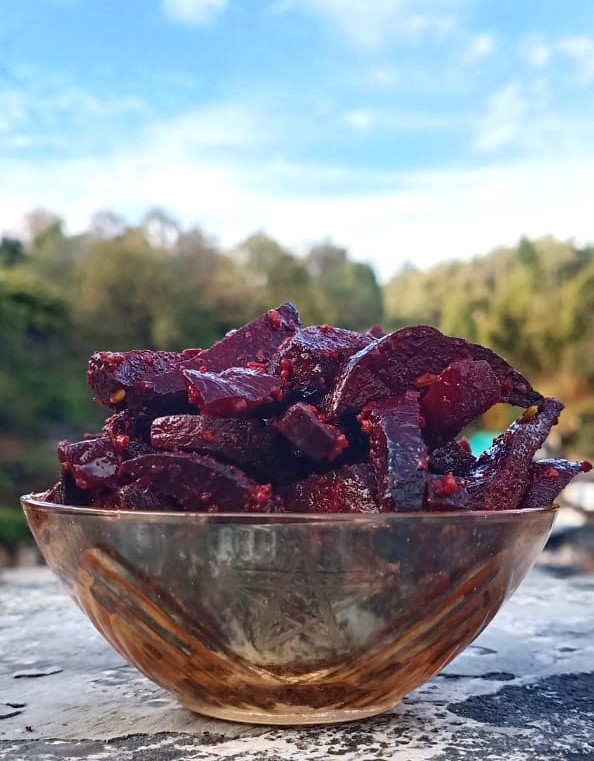
Welcome to a Flavorful Journey with Eggs!
In this special feature, titled “10 Examples of Egg Dishes,” we embark on a culinary adventure that celebrates the humble egg. Known for its incredible versatility and rich nutritional profile, the egg is not just a breakfast staple but a cornerstone in diverse cuisines worldwide.
Why Eggs?
- Nutritional Powerhouse: Eggs are packed with high-quality protein, essential vitamins, and minerals.
- Versatile Ingredient: From boiled to scrambled, eggs can be transformed into a variety of delicious dishes.
What to Expect in This Feature:
- Classic and Innovative Recipes: A showcase of ten spectacular egg-centric culinary creations.
- Nutritional Insight: Each dish is crafted with two eggs and presented in three distinct calorie ranges, catering to various dietary needs.
- Educational Backlinks: Gain deeper insights into the nutritional aspects of eggs with our previous articles:
- Discover the protein content in boiled eggs here.
- Learn about the benefits of egg yolks here.
- Explore the advantages of egg whites here.
Join Us on This Egg-citing Culinary Adventure!
Whether you’re an egg aficionado, a home cook seeking inspiration, or curious about the nutritional wonders of eggs, this exploration is for you. Get ready to be inspired, informed, and delighted by the endless possibilities with eggs.
🍳 The Classic Boiled Egg: A Nutritional Gem in Simplicity
Embarking on a Culinary and Nutritional Adventure with the Boiled Egg
The boiled egg, often hailed as the epitome of simplicity, is much more than just a quick breakfast option. It’s a versatile culinary staple, seamlessly fitting into various meals, from a protein-packed start to the day to a nutritious snack or a delightful salad topping. Let’s delve into the world of boiled eggs, exploring their nutritional value and how they can be transformed into dishes catering to different calorie needs.
A Deep Dive into the Nutritional Essence of Boiled Eggs
A single-boiled egg is a compact package of nutrition. It contains about 6 grams of high-quality protein, essential for muscle repair and growth. Additionally, it’s a source of vital nutrients like Vitamin D for bone health and choline for brain function. This makes it an excellent choice for those who seek a balance of taste and health.
Crafting the Boiled Egg to Suit Every Calorie Requirement
- For the Calorie-Conscious (Under 100 calories): Enjoy a plain boiled egg seasoned with a pinch of salt and pepper or a sprinkle of fresh herbs. It’s a minimalist approach that highlights the egg’s natural flavor while keeping the calorie count low.
- The Balanced Approach (Around 200 calories): Slice your boiled egg onto a piece of whole-grain toast. Add a light spread of avocado for a creamy texture and a boost of healthy fats. This version strikes a perfect balance between satisfying taste and nutritional value.
- Indulgent Yet Nutritious (Around 300 calories): Chop the boiled egg into a fresh salad. Include mixed greens, cherry tomatoes, and a drizzle of olive oil. Toss in a handful of nuts for an added crunch and a dose of healthy fats. This variant turns the humble boiled egg into a luxurious meal, rich in flavors and textures.
Further Explorations and Insights
For those interested in a deeper understanding of the protein content in two boiled eggs, our detailed analysis offers valuable insights. It’s a must-read for anyone looking to incorporate boiled eggs into their diet in a way that aligns with their nutritional goals. Discover more in our article here.
🥚 Egg Yolk-Based Dishes: The Richness of Yolks Unveiled
Delving into the Luxurious World of Egg Yolks
Egg yolks, often distinguished by their rich, creamy texture and deep golden color, are culinary treasures. They are the heart of many luxurious dishes, infusing them with a unique richness and flavor. Beyond their indulgent taste, egg yolks are nutritional powerhouses, packed with essential vitamins and healthy fats. Let’s explore how egg yolks can elevate various dishes while fitting into different dietary preferences.
The Nutritional Palette of Egg Yolks
Egg yolks are more than just a source of flavor. They are laden with vitamins A, D, E, and K, crucial for maintaining healthy skin, vision, and immune function. Additionally, they contain essential fatty acids and choline, vital for brain health. This makes them an invaluable ingredient for those who seek both taste and nutrition in their meals.
Crafting Egg Yolk-Based Dishes for Every Calorie Range
- Light and Nutritious (Under 150 calories): A light hollandaise sauce can be made using yogurt as a base, drizzled over steamed vegetables like asparagus or broccoli. This version offers the luxurious taste of hollandaise without the heaviness of the traditional recipe.
- The Middle Ground (Around 250 calories): For a moderately indulgent treat, consider a small serving of egg yolk custard. By reducing the sugar and serving it with fresh berries, you create a delightful dessert that’s not overly heavy.
- Decadent Delight (Around 400 calories): Embrace the richness of egg yolks with a classic carbonara sauce. Made with pancetta, a generous sprinkle of Parmesan, and a touch of cream, this dish is a celebration of flavors and textures, perfect for those special occasions.
In-Depth Exploration of Egg Yolks
For those intrigued by the nutritional profile of egg yolks and their role in a balanced diet, our comprehensive guide offers a wealth of information. It delves into the benefits and uses of egg yolks, making it an essential read for culinary enthusiasts and health-conscious individuals alike. Learn more about the nutritional benefits of egg yolks in our guide here.
🍳 The Wholesome World of Egg White Omelets: A Healthful Delight
Unfolding the Versatility and Nutrition of Egg Whites
Egg white omelets stand as a testament to the versatility and health benefits of egg whites. Renowned for their high protein content and low-calorie profile, egg whites are a favorite among health enthusiasts and fitness aficionados. In this section, we delve into the culinary potential of egg white omelets, exploring how they can be adapted to suit various dietary needs while offering a range of flavors and textures.
Nutritional Canvas of Egg Whites
Egg whites are a powerhouse of protein, providing essential amino acids without the added fats and cholesterol found in yolks. This makes them an ideal choice for those looking to maintain muscle mass or lose weight. Additionally, their low-calorie nature makes them perfect for a light meal that doesn’t compromise on nutrition or taste.
Tailoring Egg White Omelets to Fit Every Calorie Requirement
- Light and Lean (Under 150 calories): Create a simple yet flavorful omelet using only egg whites, filled with a mix of spinach, tomatoes, and a sprinkle of herbs. This version is not only low in calories but also rich in vitamins and minerals, making it a perfect meal for those on a strict calorie budget.
- Moderately Nutritious (Around 250 calories): Elevate the basic egg white omelet by adding sautéed mushrooms, onions, and a small amount of feta cheese. This version adds more depth to the flavor while still keeping the calorie count in check, ideal for a satisfying yet healthy meal.
- Rich and Satisfying (Around 350 calories): For a more indulgent take, load the omelet with a variety of cheeses, diced ham, and serve it alongside a slice of whole-grain toast. This higher-calorie version is perfect for those days when you need a more substantial meal that is still packed with protein and nutrients.
Further Insights into Egg Whites
For those interested in a deeper dive into the benefits and nutritional aspects of egg whites, our dedicated article offers a comprehensive overview. It’s an invaluable resource for understanding how egg whites can be a key component of a balanced diet, especially for those focusing on protein intake and weight management. Explore more about the advantages of egg whites in our article here.
This detailed exploration of egg white omelets not only highlights their nutritional benefits but also showcases how they can be creatively adapted to suit different calorie needs. The integration of backlinks provides a richer, more informative experience for readers interested in the health aspects of egg whites.
🍽️ Scrambled Eggs: A Comforting Blend of Taste and Nutrition
Celebrating the Versatility of Scrambled Eggs
Scrambled eggs are a beloved classic, known for their comforting taste and versatile nature. They can be as simple or as elaborate as you like, making them a staple in kitchens worldwide. In this section, we’ll explore the nutritional benefits of scrambled eggs and how they can be adapted into various calorie-specific dishes, ensuring that everyone can enjoy this comforting meal, regardless of their dietary preferences.
The Nutritional Spectrum of Scrambled Eggs
Scrambled eggs are not just about taste; they are also a significant source of nutrition. Rich in protein, they provide the necessary building blocks for muscle repair and growth. They also contain essential vitamins and minerals, including Vitamin B12 for energy and selenium for immune support. This makes them an excellent choice for a nutritious meal that satisfies both the palate and the body’s needs.
Crafting Scrambled Eggs for Every Calorie Range
- Light and Nutritious (Under 200 calories): For a low-calorie version, prepare the scrambled eggs with one whole egg and additional egg whites. Add in a mix of colorful vegetables like bell peppers, spinach, and onions for added flavor and nutrients. This version is perfect for a light breakfast or a healthy snack.
- Balanced and Flavorful (Around 300 calories): Enhance your scrambled eggs by incorporating a whole egg and some low-fat milk. Mix in diced tomatoes, a sprinkle of cheese, and a side of whole-grain toast. This version strikes a balance between being hearty and health-conscious, suitable for a fulfilling breakfast or brunch.
- Indulgent and Satisfying (Around 400-450 calories): For those days when you crave something more indulgent, use whole eggs and a dash of cream. Add in ingredients like smoked salmon, avocado, and a generous serving of cheese. Serve with a buttered croissant or bagel for a truly luxurious meal. This higher-calorie version is ideal for a weekend treat or a post-workout meal.
In-Depth Exploration of Scrambled Eggs
For those keen on understanding the protein content in scrambled eggs, especially when using three eggs, our article offers a detailed analysis. It provides insights into how scrambled eggs can fit into various diet plans, emphasizing their nutritional value and versatility. Learn more about the protein in 3 scrambled eggs and their nutritional insights here.
This comprehensive look at scrambled eggs showcases their culinary flexibility and nutritional value. The section provides ideas for preparing scrambled eggs in ways that cater to different calorie needs, making it a versatile dish for various dietary preferences. The inclusion of a backlink offers additional information for those interested in the specific nutritional benefits of scrambled eggs.
🥘 Poached Eggs: A Symphony of Delicacy and Nutrition
Exploring the Delicate World of Poached Eggs
Poached eggs, a culinary favorite, are celebrated for their delicate texture and subtle flavor. This cooking technique, which involves gently simmering eggs in water, not only preserves the eggs’ nutritional integrity but also offers a visually appealing and tasteful experience. In this section, we’ll explore the nutritional benefits of poached eggs and how they can be creatively incorporated into meals across various calorie ranges.
Nutritional Essence of Poached Eggs
Poached eggs are a healthful choice, particularly for those mindful of their calorie intake. This cooking method requires no additional fat, making the eggs lower in calories while retaining all the essential nutrients. Rich in protein, vitamins, and minerals, poached eggs are an excellent choice for a nutrient-dense meal that supports overall health and well-being.
Crafting Poached Egg Dishes for Diverse Caloric Needs
- Light and Nutritious (Under 200 calories): A poached egg served over a bed of lightly seasoned steamed vegetables, such as spinach or kale, offers a protein-rich, low-calorie meal. This dish is ideal for those seeking a quick, healthy breakfast or a light lunch option.
- Moderately Filling (Around 300 calories): Elevate your poached egg by placing it on a slice of whole-grain toast, accompanied by a smear of avocado and a sprinkle of pepper. This combination provides a balanced meal with healthy fats, fiber, and protein, suitable for a satisfying breakfast or a nutritious snack.
- Indulgent Yet Balanced (Around 400 calories): For a more decadent meal, prepare a classic eggs Benedict. Place the poached egg on a toasted English muffin, add a slice of ham or smoked salmon, and top it with a light hollandaise sauce. This version is perfect for a weekend brunch or a special occasion, offering a luxurious taste experience.
Adapting Poached Eggs to Various Dietary Preferences
Poached eggs are incredibly adaptable and can fit into a wide range of dietary plans. They are an excellent option for low-carb or ketogenic diets and are also suitable for gluten-free eating patterns. Their high protein content makes them a popular choice among athletes and fitness enthusiasts.
Further Reading and Resources
For those interested in learning more about the nutritional aspects of eggs, particularly in relation to protein content and different cooking methods, our articles offer in-depth insights. These resources are invaluable for understanding how to include poached eggs in your diet in a way that aligns with your nutritional goals and preferences. Discover more about the benefits and versatility of eggs in our comprehensive guides, such as the nutritional profile of egg whites here and the protein content in scrambled eggs here.
🍳 Egg Salad: A Versatile and Nutritious Delight
Diving into the World of Egg Salad
Egg salad, a classic dish known for its versatility and ease of preparation, is a delightful way to enjoy the nutritional benefits of eggs. Whether served as a sandwich filling, a salad topper, or a standalone dish, egg salad can be tailored to suit various tastes and dietary needs. In this section, we’ll explore the nutritional aspects of egg salad and how it can be adapted to fit different calorie requirements.
Nutritional Profile of Egg Salad
Egg salad combines the protein-rich goodness of eggs with the flavors and textures of additional ingredients like mayonnaise, mustard, and herbs. Eggs are a complete protein source, providing all nine essential amino acids necessary for the body. When combined with a variety of vegetables and seasonings, egg salad becomes a nutrient-packed meal that can cater to a balanced diet.
Creating Egg Salad for Every Calorie Preference
- Light and Refreshing (Under 200 calories): Prepare a low-calorie egg salad by using Greek yogurt instead of mayonnaise and adding diced celery, onions, and fresh herbs. Serve it on a bed of lettuce or as a filling for a whole-grain wrap for a light and satisfying meal.
- Moderately Nutritious (Around 300 calories): For a more filling option, use a combination of light mayonnaise and mustard. Add chopped hard-boiled eggs, a mix of colorful vegetables like bell peppers and cucumbers, and a touch of paprika. This version is perfect for a hearty sandwich or as a side dish.
- Rich and Creamy (Around 400 calories): Create a decadent egg salad with full-fat mayonnaise, a dash of cream, and a blend of spices. Incorporate additional ingredients like avocado or bacon bits for added flavor and richness. Serve this version on a croissant or with a side of baked potato wedges for a more indulgent meal.
Tailoring Egg Salad to Dietary Needs
Egg salad’s adaptability makes it suitable for various dietary preferences. It can be made low-carb by reducing high-carb ingredients or gluten-free by choosing appropriate serving options like gluten-free bread or lettuce wraps. Its high protein content also makes it a favorable option for post-workout meals or for those looking to increase their protein intake.
Further Reading and Exploration
For those interested in exploring more about the nutritional benefits of eggs, particularly in relation to protein and calorie content, our articles provide a wealth of information. These resources can help you understand how to incorporate egg salad into your diet in a way that aligns with your health and fitness goals. Discover more about the benefits and versatility of eggs in our comprehensive guides, such as the nutritional profile of egg yolks here and the calorie and nutrition content in egg whites here.
This section offers an in-depth look at egg salad, highlighting its nutritional value and adaptability to different calorie needs. The inclusion of backlinks provides readers with additional resources to further explore the nutritional aspects of eggs in various forms.
A Culinary Journey: Egg Recipes and Nutritional Insights
Let’s embark on a flavorful journey that celebrates the incredible world of eggs. We’ll begin with ten mouthwatering egg-based recipes that promise to delight your taste buds. Afterward, we’ll delve into the nutritional insights of different egg preparations to understand their health benefits.
Ten Tempting Egg Recipes:
- 10 Examples of Egg Dishes with 2 Eggs:
- Summary: Explore a diverse collection of ten egg-centric recipes, each celebrating the unique flavors and versatility of eggs. From breakfast classics to savory delights, these dishes are sure to inspire your culinary creativity.
- Who It’s For: Ideal for food enthusiasts seeking new and delicious ways to savor the goodness of eggs in their meals.
Nutritional Insights:
Now that your palate is primed, let’s turn our attention to the nutritional side of these incredible ingredients. Gain a deeper understanding of how eggs can benefit your health and nutrition:
- How Much Protein in Two Boiled Eggs:
- Summary: Dive into the world of boiled eggs and discover their impressive protein content. Learn about the comprehensive nutritional profile, including details on calories, fats, vitamins, and minerals.
- Who It’s For: Perfect for those eager to explore the nutritional value of boiled eggs and how they can enhance their diet.
- Egg Yolks or Yellow: Nutritional Protein Profile:
- Summary: Take a closer look at the nutrient-rich egg yolk, where proteins, vitamins, minerals, and fatty acids come together. Understand the health benefits and culinary applications of this often-debated component.
- Who It’s For: Essential reading for individuals intrigued by the potential health advantages and culinary uses of egg yolks.
- Calories & Nutrition in Egg Whites:
- Summary: Explore the low-calorie, high-protein world of egg whites and their role in various dietary plans. Gain insights into their versatility in cooking and their relevance for weight management and muscle building.
- Who It’s For: Particularly useful for those interested in maintaining a healthy weight and optimizing their muscle health.
- Protein in 3 Scrambled Eggs: Nutritional Insights and Benefits:
- Summary: Uncover the protein-rich nature of scrambled eggs and their impact on your diet. Learn about their caloric and fat content, along with tips for healthier preparation methods.
- Who It’s For: An excellent resource for individuals looking to incorporate scrambled eggs into their balanced diet for their protein content and overall nutritional value.
This guide seamlessly blends the joy of savoring delicious egg recipes with the knowledge of how these culinary gems contribute to your nutritional well-being. Whether you’re a culinary enthusiast seeking inspiration or someone keen on making informed dietary choices, this journey provides you with a comprehensive understanding of the wonderful world of eggs.
🥪 Egg Sandwich: A Fusion of Flavor and Nutrition
Embarking on the Flavorful Journey of Egg Sandwiches
The egg sandwich is a beloved staple in many cultures, offering a perfect blend of convenience and taste. It’s a versatile dish that can be enjoyed at any time of the day, from a quick breakfast to a satisfying lunch or a light dinner. In this exploration, we delve into the various ways to prepare egg sandwiches, focusing on their nutritional benefits and how they can be adapted to suit different dietary needs and calorie preferences.
Nutritional Aspects of Egg Sandwiches
Egg sandwiches combine the protein-rich benefits of eggs with the carbohydrates of bread, providing a balanced meal that can keep you energized throughout the day. Depending on the additional ingredients used, such as vegetables, cheeses, and spreads, the nutritional value can vary, offering options for those looking for high-protein, low-carb, or nutrient-dense meals.
Crafting Egg Sandwiches for Diverse Caloric Needs
- Light and Easy (Under 250 calories): For a low-calorie option, prepare an egg sandwich with one boiled or poached egg, served on a slice of whole-grain bread with lettuce and tomato. This version is ideal for a light breakfast or snack, providing essential nutrients without too many calories.
- Satisfying and Balanced (Around 350 calories): Create a more filling sandwich with scrambled eggs, a slice of low-fat cheese, and a layer of spinach or arugula on whole-grain bread. This version offers a good balance of protein, fiber, and healthy fats, suitable for a hearty breakfast or lunch.
- Indulgent and Flavorful (Around 450-500 calories): For those looking for a more indulgent meal, use fried eggs, bacon, and a slice of cheddar cheese, served on a buttered brioche bun or croissant. Add a spread of aioli or mayonnaise for extra flavor. This higher-calorie version is perfect for a weekend brunch or a post-workout meal.
Adapting Egg Sandwiches to Various Diets
Egg sandwiches are highly adaptable and can be modified to fit a range of dietary preferences. They can be made gluten-free by using gluten-free bread, or low-carb by substituting bread with lettuce wraps. For vegetarians, omitting the meat and adding more vegetables or plant-based proteins can create a satisfying meal.
Further Insights and Ideas
For those interested in learning more about the nutritional content of eggs and how they can be incorporated into a balanced diet, our articles offer comprehensive insights. These resources are invaluable for understanding the role of eggs in various dishes, including sandwiches, and how to prepare them in a way that aligns with your dietary goals. Explore more about the benefits and versatility of eggs in our detailed guides, such as the protein content in two boiled eggs here and the nutritional insights of scrambled eggs here.
This section provides a thorough look at egg sandwiches, emphasizing their versatility, nutritional value, and adaptability to different calorie needs. The inclusion of backlinks offers readers additional resources to explore the broader context of eggs in a healthy diet, enhancing the overall informative value of the content.
🍳 Frittata: A Canvas of Culinary Creativity
Exploring the Rich and Versatile World of Frittatas
The frittata, an Italian dish similar to an omelet or crustless quiche, offers a canvas for culinary creativity. It’s a versatile and easy-to-make dish that can be enjoyed for breakfast, brunch, or even as a main course. Frittatas are perfect for incorporating a variety of ingredients, from vegetables and meats to cheeses and herbs, making them a delightful option for those who love to experiment with flavors. In this section, we’ll explore the nutritional aspects of frittatas and how they can be tailored to fit different dietary needs and calorie counts.
Nutritional Profile of Frittatas
Frittatas are not only delicious but also nutritious. They are primarily made with eggs, providing a high-quality source of protein and essential nutrients. The addition of vegetables increases the fiber content and adds essential vitamins and minerals. Depending on the ingredients used, frittatas can be adapted to be low-carb, gluten-free, or vegetarian, making them suitable for a wide range of dietary preferences.
Crafting Frittatas for Every Calorie Preference
- Light and Veggie-Packed (Under 300 calories): Create a vegetable-heavy frittata with egg whites or a mix of whole eggs and egg whites. Include spinach, tomatoes, bell peppers, and onions for a colorful and nutrient-rich meal. This version is perfect for those looking for a low-calorie yet satisfying dish.
- Moderately Nutritious (Around 400 calories): For a more substantial meal, use whole eggs and add ingredients like mushrooms, zucchini, and a moderate amount of cheese, such as feta or goat cheese. Serve with a side salad for a balanced and flavorful brunch or dinner.
- Rich and Indulgent (Around 500 calories): Prepare a decadent frittata with whole eggs, cream, cheese like cheddar or Gruyère, and add cooked bacon or sausage. This version is ideal for those days when you crave something hearty and comforting.
Adapting Frittatas to Various Diets
Frittatas can easily be adapted to fit different dietary needs. For a low-carb or ketogenic diet, focus on high-fat ingredients and limit high-carb vegetables. For a vegetarian version, omit the meat and add more vegetables or plant-based proteins like tofu. Gluten-free diets are naturally accommodated as frittatas do not require flour.
Further Exploration and Resources
For those interested in the nutritional details of eggs, especially in relation to protein content and calorie counts, our articles offer in-depth information. These resources are valuable for understanding how to incorporate frittatas into your diet in a way that aligns with your health goals. Discover more about the nutritional benefits of eggs in our comprehensive guides, such as the calorie and nutrition content in egg whites here and the insights on protein in scrambled eggs here.
🥘 Shakshuka: A Flavorful Fusion of Eggs and Tomatoes
Delving into the Vibrant World of Shakshuka
Shakshuka, a popular Middle Eastern and North African dish, is a flavorful blend of poached eggs in a hearty tomato sauce, often spiced with cumin, paprika, and chili peppers. This dish is not only a feast for the taste buds but also offers a nutritious meal that can be enjoyed any time of the day. In this section, we’ll explore the nutritional benefits of shakshuka and how it can be adapted to fit various dietary needs and calorie preferences.
Nutritional Highlights of Shakshuka
Shakshuka is a nutrient-dense dish, combining the protein-rich benefits of eggs with the vitamins and antioxidants found in tomatoes and spices. The eggs provide a high-quality protein source, while the tomatoes offer vitamin C, potassium, and lycopene, an antioxidant known for its health benefits. This dish can be a part of a balanced diet, offering both flavor and nutrition.
Tailoring Shakshuka to Different Caloric Needs
- Light and Healthy (Under 300 calories): Prepare a basic shakshuka with a tomato and onion base, spiced with cumin and paprika. Use egg whites instead of whole eggs to reduce the calorie count. This version is perfect for a light yet flavorful breakfast or lunch.
- Moderately Filling (Around 400 calories): Enhance the dish by using whole eggs and adding bell peppers and spinach to the tomato sauce. Serve with a slice of whole-grain bread for a more satisfying meal, ideal for brunch or a hearty dinner.
- Rich and Hearty (Around 500 calories): For a more indulgent version, include chorizo or sausage in the tomato sauce and use whole eggs. Top with feta cheese and serve with a piece of crusty bread to soak up the delicious sauce. This version is perfect for those looking for a comforting and filling meal.
Adapting Shakshuka to Various Diets
Shakshuka is a versatile dish that can be easily modified to suit different dietary preferences. For a vegetarian version, omit the meat and add more vegetables. For a gluten-free option, ensure that the bread served alongside is gluten-free. The dish can also be made low-carb by serving it without bread.
Further Insights and Ideas
For those interested in exploring more about the nutritional aspects of eggs, particularly in relation to protein and calorie content, our articles provide a wealth of information. These resources can help you understand how to incorporate shakshuka into your diet in a way that aligns with your health and fitness goals. Discover more about the benefits and versatility of eggs in our comprehensive guides, such as the nutritional profile of egg yolks here and the calorie and nutrition content in egg whites here.
🍲 Egg Curry: A Spicy and Nutritious Delight
Embarking on the Flavorful Journey of Egg Curry
Egg curry, a staple in many cuisines around the world, is a delightful combination of hard-boiled eggs simmered in a spicy and aromatic sauce. This dish is not only rich in flavors but also offers substantial nutritional benefits. In this section, we’ll explore the various ways to prepare egg curry, focusing on its nutritional aspects and how it can be adapted to suit different dietary needs and calorie preferences.
Nutritional Composition of Egg Curry
Egg curry is a protein-rich dish, thanks to the eggs, and can be a part of a balanced diet. The curry sauce, typically made with a base of tomatoes, onions, and a variety of spices, adds not only flavor but also a range of nutrients. Tomatoes provide vitamin C and lycopene, while spices like turmeric and cumin offer anti-inflammatory benefits and aid digestion.
Customizing Egg Curry for Different Calorie Ranges
- Light and Flavorful (Under 300 calories): Prepare a lighter version of egg curry using tomato-based sauce with minimal oil. Include spices for flavor and use egg whites instead of whole eggs to reduce the calorie count. Serve with a side of steamed vegetables for a complete meal.
- Moderately Nutritious (Around 400 calories): For a more filling meal, use whole eggs and prepare the curry with a moderate amount of oil. Add a mix of vegetables like peas or spinach to the sauce for added nutrition. Serve with a small portion of brown rice or whole-grain bread.
- Rich and Hearty (Around 500 calories): Create a richer version of egg curry by using coconut milk or cream in the sauce and whole eggs. Include a variety of spices for depth of flavor. Serve with a larger portion of rice or naan bread for a satisfying and indulgent meal.
Adapting Egg Curry to Various Diets
Egg curry can be easily adapted to fit different dietary preferences. For a vegetarian version, consider adding paneer or tofu instead of eggs. For a gluten-free diet, ensure that the accompanying bread or rice is gluten-free. The dish can also be made low-carb by serving it without rice or bread.
Further Reading and Resources
For those interested in the nutritional details of eggs, especially in relation to protein content and calorie counts, our articles offer comprehensive insights. These resources are valuable for understanding how to incorporate egg curry into your diet in a way that aligns with your health goals. Discover more about the nutritional benefits of eggs in our detailed guides, such as the protein content in two boiled eggs here and the insights on egg yolks here.
This section provides a thorough exploration of egg curry, highlighting its rich flavors, nutritional value, and adaptability to different calorie needs. The inclusion of backlinks offers readers additional resources to deepen their understanding of the nutritional aspects of eggs and how they can be effectively incorporated into diverse diets.
Conclusion: Celebrating the Versatility and Nutritional Power of Eggs
Eggs: A Culinary Staple with Endless Possibilities
As we conclude our exploration of egg dishes, it’s clear that eggs are not just a culinary staple but a powerhouse of nutrition and versatility. From the delicately poached eggs to the robust flavors of egg curry, each dish we’ve discussed showcases the incredible adaptability of eggs in various cuisines and dietary preferences. Whether you’re looking for a light, healthy meal or a rich, indulgent dish, eggs can be transformed to meet your needs while providing essential nutrients.
The Nutritional Spectrum of Egg-Based Dishes
Throughout this journey, we’ve seen how egg dishes can range from low-calorie, nutrient-dense meals to more indulgent, hearty options. Eggs are a fantastic source of high-quality protein, essential vitamins, and minerals, making them an ideal ingredient for those focused on fitness, health, and overall well-being. The added ingredients and preparation methods further diversify the nutritional profile of each dish, allowing for customization based on individual dietary goals.
Incorporating Eggs into Your Diet
Whether you’re an athlete looking for a protein-rich meal, someone following a specific diet like keto or gluten-free, or just seeking to add variety to your meals, eggs offer a solution. The recipes and ideas presented here are just a starting point. The true beauty of cooking with eggs lies in their ability to blend with a myriad of flavors and ingredients, encouraging culinary creativity and experimentation.
A Resource for Egg Enthusiasts
For those eager to delve deeper into the nutritional aspects of eggs and discover more ways to incorporate them into your diet, our articles provide a wealth of information. From understanding the protein content in different egg preparations to exploring low-calorie egg-based meals, our resources are designed to guide you in making informed dietary choices. We encourage you to explore further and experiment with the recipes and ideas shared in our comprehensive guides.
Final Thoughts
Eggs are more than just a breakfast staple; they are a versatile and nutritious ingredient that can be enjoyed in countless ways. We hope this exploration of egg dishes has inspired you to experiment with eggs in your cooking and to appreciate their nutritional value. Remember, the journey with eggs is as diverse as your imagination, so keep exploring and enjoy the delicious and nutritious world of egg-based dishes!
10 FAQs for Eggs in Diet
- What are the health benefits of incorporating eggs into my diet? Eggs are a nutritional powerhouse, offering high-quality protein, essential vitamins like B12 and D, and minerals such as selenium and choline. They’re beneficial for muscle strength, brain health, and eye protection.
- Can eggs be a part of a weight loss diet? Absolutely! Eggs are low in calories yet high in protein and nutrients, making them an excellent food choice for weight loss diets. They promote satiety and can help reduce overall calorie intake.
- How can I make my egg dishes healthier? To make egg dishes healthier, consider using minimal oil, incorporating plenty of vegetables, opting for whole eggs or egg whites, and choosing healthier cooking methods like boiling or poaching.
- Are egg dishes suitable for vegetarians? Eggs are a great option for vegetarians as they provide a complete protein source. Dishes like frittatas and omelets can be loaded with vegetables for a balanced vegetarian meal.
- What are some quick and easy egg recipes for busy mornings? Quick egg recipes include scrambled eggs, boiled eggs, and omelets. These can be prepared in under 10 minutes and are perfect for a nutritious, on-the-go breakfast.
- Can I include eggs in a low-carb or keto diet? Yes, eggs are ideal for low-carb and ketogenic diets due to their high protein and fat content and low carbohydrate levels. Dishes like egg salad or frittatas can be easily adapted to fit these dietary requirements.
- How can I make egg dishes more flavorful? Enhance the flavor of egg dishes by adding herbs, spices, cheese, or vegetables. Experimenting with different ingredients like bell peppers, onions, garlic, or even curry spices can elevate the taste.
- What are some creative ways to serve eggs to kids? Make eggs appealing to kids by preparing them in fun shapes, adding colorful vegetables, or incorporating them into dishes like mini quiches or egg muffins.
- Are there any egg substitutes for those with allergies? For those with egg allergies, substitutes like applesauce, mashed bananas, or commercial egg replacers can be used in certain recipes, although the taste and texture might vary.
- How can I store and reheat leftover egg dishes? Leftover egg dishes should be stored in an airtight container in the refrigerator and can be reheated in a microwave or oven. It’s best to consume them within 1-2 days for optimal freshness and safety.
Blog Tags for the Post
egg recipes, healthy eating, protein-rich foods, quick breakfast ideas, vegetarian options, low-carb diets, ketogenic diet, cooking tips, meal prep, nutritional benefits
















